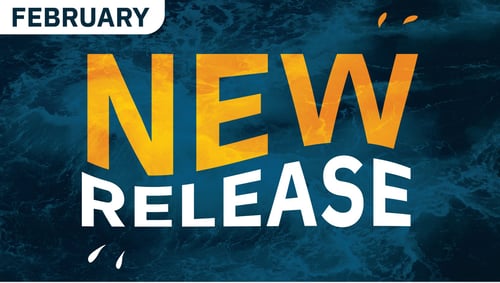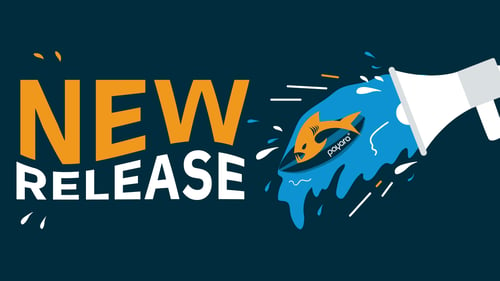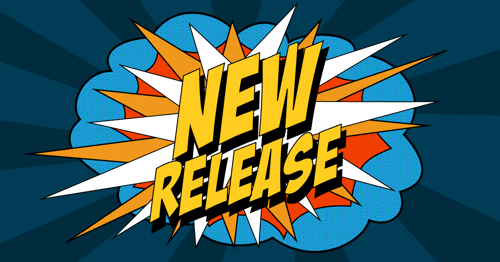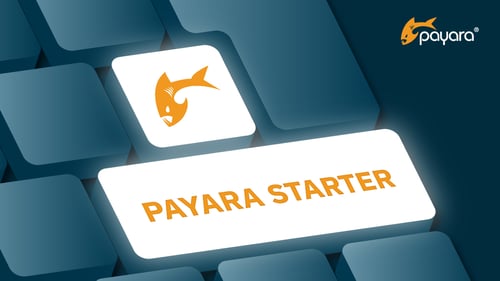Posts tagged Payara Enterprise (4)
Payara Server's High Availability Architecture: A Quick Technical Overview
Published on 05 Jun 2024
by Luqman Saeed
Topics:
JMS,
Hazelcast,
Payara Server,
Payara Platform,
Payara Enterprise,
Payara Community,
Jakarta EE
|
2 Comments
Introduction
In today's business world, competition is fierce and relentless. As a result, maximizing uptime while reducing downtime and its expenses is a top priority. In particular, users now expect applications to deliver consistent performance, regardless of unexpected challenges. Payara Server offers a high availability (HA) architecture that is designed to keep your business operational at all times. This blog post explores the components and configurations needed to create a highly available Payara Server environment, ensuring your applications remain accessible and responsive.
The Payara Monthly Catch - May 2024
Published on 29 May 2024
by Chiara Civardi
Topics:
Java EE,
Payara Micro,
Microservices,
JakartaEE,
Payara Server,
New Releases,
Payara Events,
Payara Enterprise,
Payara Community,
Payara Cloud
|
0 Comments
Avast ye, Payara Community! We are ready to chart our course for new horizons in June, but before we do, let's take a moment to look at all the treasures our old salts developed to power up your Java and Jakarta EE applications. We've collected the best pearls and gems in our latest roundup - check them out now!
The Payara Monthly Catch - April 2024
Published on 29 Apr 2024
by Chiara Civardi
Topics:
Java EE,
Payara Micro,
Microservices,
JakartaEE,
Payara Server,
New Releases,
Payara Events,
Payara Enterprise,
Payara Community,
Payara Cloud
|
0 Comments
All aboard, Payara Community! It's time to hoist the sails and set course for new adventures in May. But before we do, let's take a look back at the treasures we uncovered in April. We've gathered our favorite catches from the depths to share with you, ready to power up your Jakarta EE applications and propel you towards success! Join us as we navigate through the highlights of the month in our latest roundup
The Payara Monthly Catch - March 2024
Published on 29 Mar 2024
by Chiara Civardi
Topics:
Java EE,
Payara Micro,
Microservices,
JakartaEE,
Payara Server,
New Releases,
Payara Events,
Payara Enterprise,
Payara Community,
Payara Cloud
|
0 Comments
Detect Slow SQL Queries With Payara Slow SQL Logger
Published on 22 Mar 2024
by Luqman Saeed
Topics:
Payara Micro,
Payara Enterprise,
Payara Community
|
0 Comments
What’s New In the February 2024 Payara Platform Release
Published on 21 Feb 2024
by Luqman Saeed
Topics:
Payara Micro,
Cloud,
Payara Enterprise,
Payara Cloud,
Jakarta EE
|
0 Comments
We are happy to announce the February 2024 release of Payara Platform Enterprise 6.11.0 (request free trial here) and Payara Platform Community 6.2024.2 (download here) are available!
This month's release comes with a number of enhancements, bug fixes, component upgrades, and new capabilities aimed at improving the stability and developer experience of the Payara Platform for you. See below for the details.
The Payara Monthly Catch
Published on 08 Feb 2024
by Valentina Kovacic
Topics:
Java EE,
Payara Micro,
Microservices,
JakartaEE,
Payara Server,
New Releases,
Payara Events,
Payara Enterprise,
Payara Community,
Payara Cloud
|
0 Comments
What’s New in the January 2024 Payara Platform Release?
Published on 29 Jan 2024
by Luqman Saeed
Topics:
New Releases,
Payara Enterprise
|
0 Comments
Splashing into the new year with vigor, the Payara Engineering kitchen announces the first release of Payara Platform for 2024.
This release brings enhancements, security fixes, and bug fixes, ensuring a more robust and efficient environment for your mission critical workload. Payara Enterprise 6.10.0 (request free trial) comes with 2 improvements, 4 bug fixes, 10 component upgrades and 2 security fixes. Payara Community 6.2024.1 (download here) also comes with 2 improvements, 4 bug fixes, 10 component upgrades and 2 security fixes.
What’s New In The December 2023 Payara Platform Release?
Published on 18 Dec 2023
by Luqman Saeed
Topics:
What's New,
Payara Enterprise,
Jakarta EE
|
0 Comments
Diving into the digital depths with a surge of enhancements, the December 2023 release of Payara Platform has arrived. This release comes with significant improvements, bug fixes, and component upgrades, further enhancing the robustness and capabilities of the Payara Platform for Jakarta EE and MicroProfile applications.
Payara Enterprise 6.9.0 (request your free trial here) comes with 3 improvements, 4 bug fixes and 7 component upgrades. Payara Community 6.2023.12 (download here) also comes with 2 improvements, 3 bug fixes and 7 component upgrades.
What’s New In The Nov 2023 Payara Platform Release?
Published on 16 Nov 2023
by Luqman Saeed
Topics:
JakartaEE,
Payara Platform,
Payara Enterprise,
Payara Community,
Jakarta EE
|
0 Comments
Splashing onto the scene with a tidal wave of updates, the November 2023 release of Payara Platform is here. This release brings enhancements, security fixes, and bug fixes, ensuring a more robust and efficient environment for your mission critical workload. Payara Enterprise 6.8.0 comes with 4 improvements, 3 bug fixes, 1 security fix and 1 component upgrade. Payara Community 6.2023.11 also comes with 4 improvements, 3 bug fixes, 1 security fix and 1 component upgrade.


/wellness%20wednesday/wellness-wednesday-jess-1.jpg?width=500&name=wellness-wednesday-jess-1.jpg)



